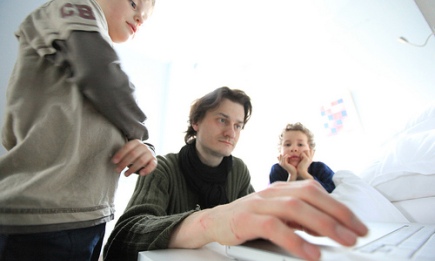Estonia’s visionary force

While the European Union still discusses a broad band future (and cuts the budget), Estonia is already reaping the fruits from hooking up all schools to a country wide network. Professor Jaak Aaviksoo, Estonian Minister of Education and Research, was the visionary force behind this in the years 1995-1996.
Avoiding the digital divide
“When I was Education Minister in the nineties, we rolled out a national programme connecting all schools to the internet” Minister Aaviksoo explains at the International Summit on the Teaching Profession (#ISTP) in Amsterdam. “After that I kept working on the programme as director of the foundation responsible for the programme.”
“One of the most interesting results is that Estonia managed to avoid the digital divide”, explains Aaviksoo. “Another thing is that we have built a huge network of innovative teachers. Personally I strongly believe in empowering people. Connecting the schools to the internet was a competitive programme, it was not top-down, but wherever teachers took the initiative and got local governments or businesses to invest € 5000, we would match that sum.”
What’s next for Estonia?
An unexpected result of Aaviksoo’s ‘Tiger leap’ is that the students of 15 years ago now account for the large number of ICT start-ups in Estonia. “In the last five years I’ve seen several dozens of start-ups”, says Minister Aaviksoo. “There is a huge potential in the combination of new technology and education and I’m very glad that the government – during the nineties – supported my ideas. The President then was a figurehead of the ‘Tiger leap’, I managed to convince him”,
he says with a smile.
With a high level of digital literacy, Estonia already leads the way. So what is the next level? Jaak Aaviksoo: “We are now working on a pilot programme together with an global company promoting computer based math (www.computerbasedmath.org), an organization very committed to education. We set very young people, 6- 7-year olds, to the task of programming.”
Another avenue is that of robotics: “Both boys and girls find it fascinating to explore this field.”
“The strategic potential of ICT is that it allows us to use math to solve real problems. Math is not an end in itself, it’s a mean to an end. I see math as Lego-blocks, which you can use to construct anything”, Aaviksoo says. “This is how children play. People like making new things, changing the environment. Classical math education is not about that, it is not active, but reflective.”
Trust and enthusiasm
Aaviksoo: “In the end it’s all about trust and enthusiasm, trying to get enthusiastic people together. That would be my advice to other countries. But of course, Estonia is a small country with only 16.000 teachers. I realize it is a 1000 times smaller than China. But Estonia can figure as a kind of ‘experiment’ to explore the possibilities of ICT. The costs of making a mistake are relatively small.”
From theoretical physics to politics
Aaviksoo himself did quite some programming in his days at university (doing theoretical physics). “From the early days of computing I have been interested in informatics”, he says.
What drove the scientist into politics? Aaviksoo: “When Gorbatchev opened the door, I managed to squeeze through. I got an Alexander von Humboldt-stipend and from ’87 I worked in Germany, France and Japan.”
“When I returned to Estonia in ’92 I was asked by my University to take up an administrative function. That was my first big career change. After that I was asked to join the government, although I had no political affiliation. Since then I remained in politics.”
Meest Gelezen
‘Free riding brengt het hoger onderwijs in de problemen’
Vrouwen houden universiteit draaiende, maar krijgen daarvoor geen waardering
Hbo-docent wil wel rolmodel zijn, maar niet eigen moreel kompas opdringen
‘Sluijsmans et al. slaan de plank volledig mis’
Aangepast wetsvoorstel internationalisering dient vooral samenleving in plaats van student

